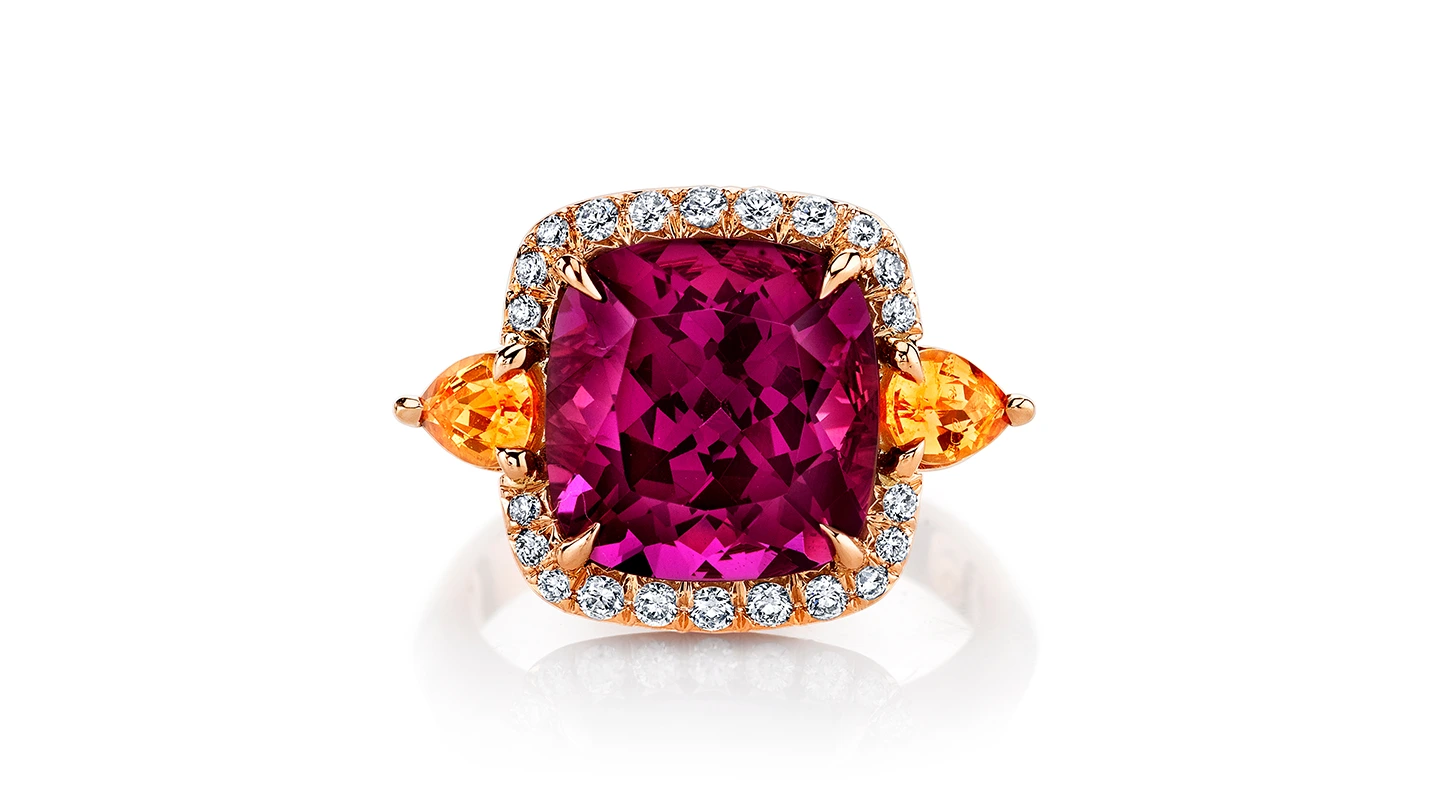Courtesy of Omi Privé
Garnets come in a variety of vivid colors, as showcased in this stunning ring featuring a vivid purplish-pink rhodolite garnet flanked by vibrant orange spessartite garnets.
When most people hear “garnet,” they picture a deep red gem, but garnets actually come in every color of the rainbow—from vibrant greens and fiery oranges to soft purples and rare blues.
Garnets include many varieties, from popular red almandines to rare green tsavorites and vivid orange spessartines, each with its own distinct beauty, quality factors and price points.
In this article, we’ll explore why garnets’ rich history and symbolism make them a striking alternative to traditional diamond engagement rings, how to protect them for daily wear, and tips for selecting the right garnet.
Garnet Essentials: What Every Buyer Should Know
What are Garnets?
Many people are surprised to learn that garnet isn’t just one type of gem—it’s actually a group of closely-related silicate minerals. All garnets share the same crystal structure (the “skeleton” of the gem), but the chemical elements (“building blocks”) can be different, which is what creates the wide range of garnet colors and types.
There are over twenty known garnet species, but only five are commonly used in jewelry. These include:
- Almandine: typically appears in shades of brownish to purplish red and is made of iron, aluminum and silicon.
- Pyrope: usually pink to orange-red or brown and contains magnesium, aluminum and silicon.
- Andradite: comes in green, yellow-green, golden yellow or brown shades. It contains calcium, iron and silicon, and includes the rare and valuable green demantoid and the rare iridescent rainbow andradite garnet.
- Grossular: ranges from pale to rich green (especially in its prized form tsavorite), but can also appear in yellow, brown or even pink tones. It’s made of calcium, aluminum and silicon.
- Spessartine: typically appears in warm hues—yellow, orange, red or brown—and is made of manganese, aluminum and silicon. Well-known types include Mandarin garnet and Malaya garnet, which is a mix of spessartine and pyrope.
Almost all garnets are blends of the above species, such as pyrope-almandine, pyrope-spessartine and almandine-spessartine. For example, rhodolite, which has a beautiful purplish-red color, is a mix of pyrope and almandine. These combinations often result in unique and in-between shades.
Some rare garnets can even show special optical effects, like color change, where the stone shifts colors under different lighting, or asterism, a star-like pattern that appears on the surface when the gem is cut just right.
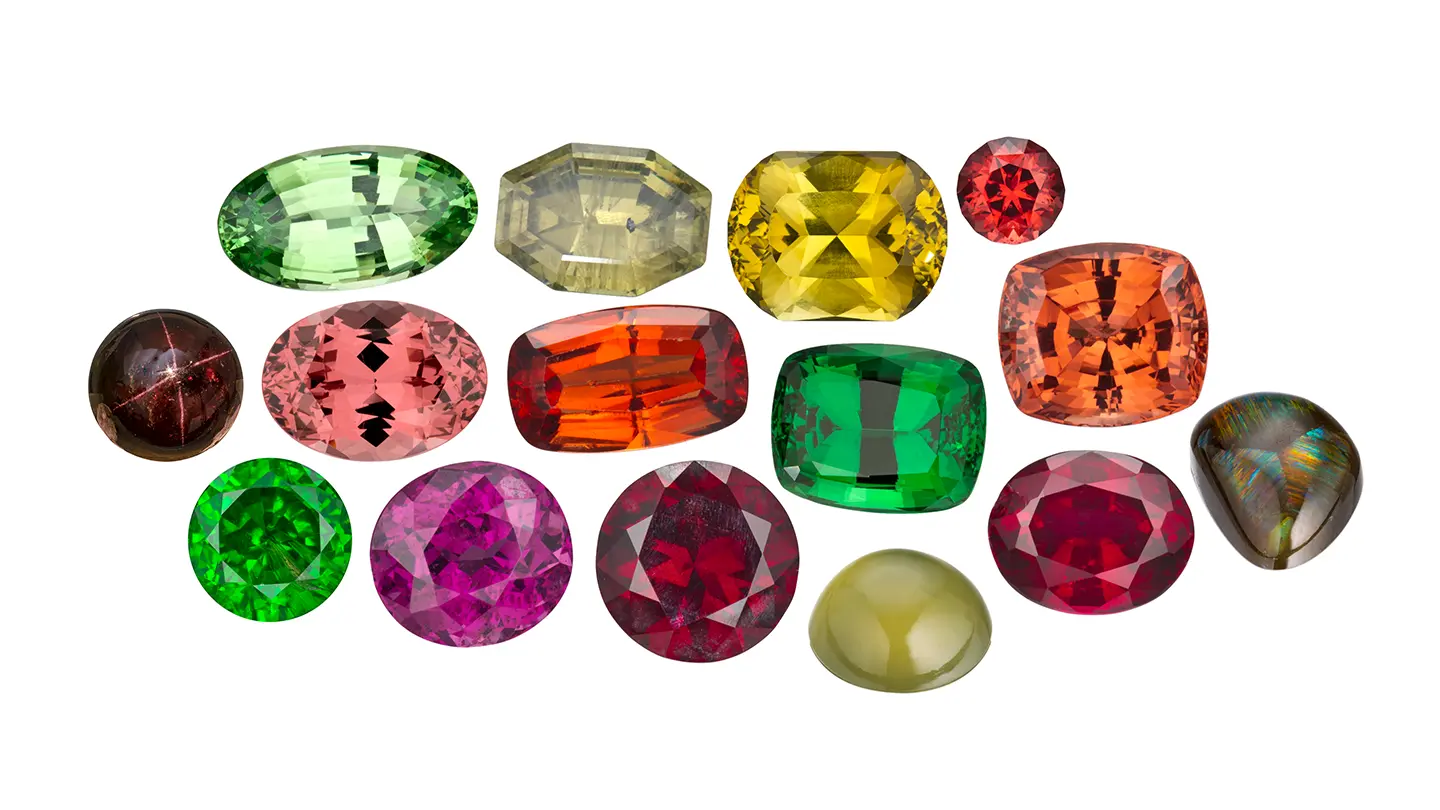
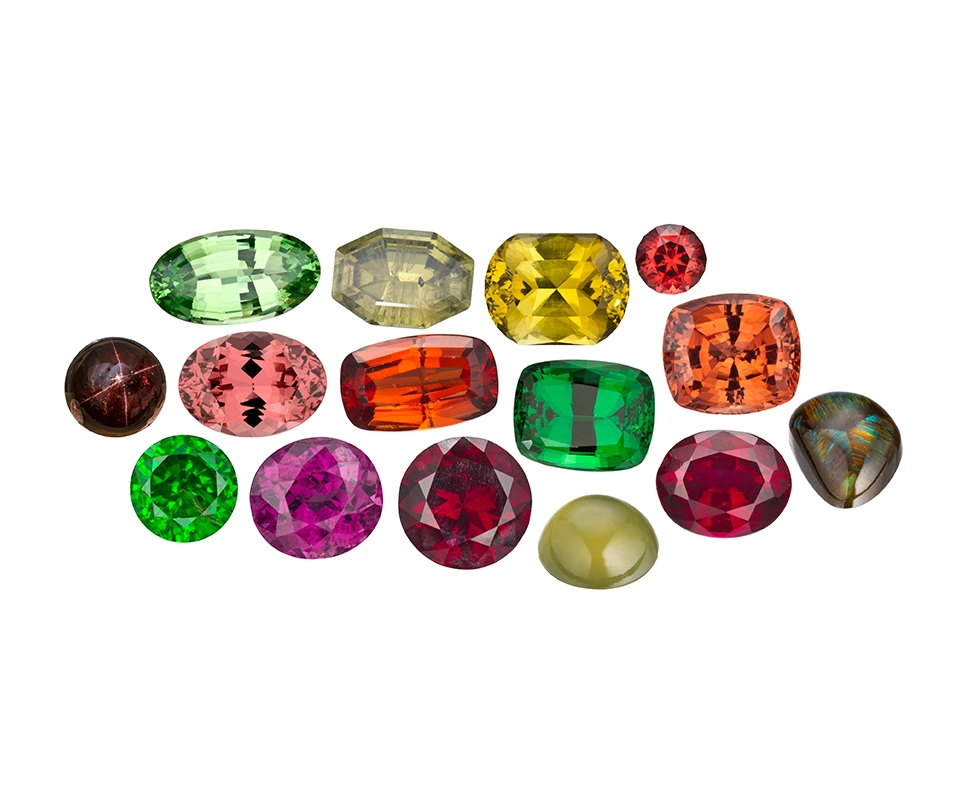
Garnet Hardness and Care
Is garnet good for engagement ring use? Garnets range from 6.5 to 7.5 on the Mohs hardness scale, which measures how easily one gem can be scratched by another. This means garnets are decently hard stones, but they still need to be worn with care when set as ring stones—especially in engagement rings meant for daily wear. It is important to set them in protective settings such as halo or bezel settings or they may become abraded or chipped over time. They may also need repolishing down the line to keep their facets crisp and sparkling.
Since dust often contains quartz and quartz ranks 7 on the Mohs scale, gems with a Mohs hardness of 7 or lower, like garnet, should be cleaned carefully. Grit or dust on the surface should be rinsed off rather than wiped, to avoid scratching the gem’s surface over time.
Toughness, which measures how resistant a stone is to sudden blows, is another important factor in determining if garnet is good for engagement rings. Garnets have fair to good toughness and should not be subjected to hard knocks or rough wear. For example, garnet rings should be taken off before doing physical activities like gardening.
When it comes to cleaning, warm soapy water is always a safe choice for garnets. Ultrasonic cleaning is usually safe, except for stones with visible fractures. However, steam cleaning is not recommended because the sudden, intense heat and moisture can create internal stress or even fractures in some gems with natural inclusions.
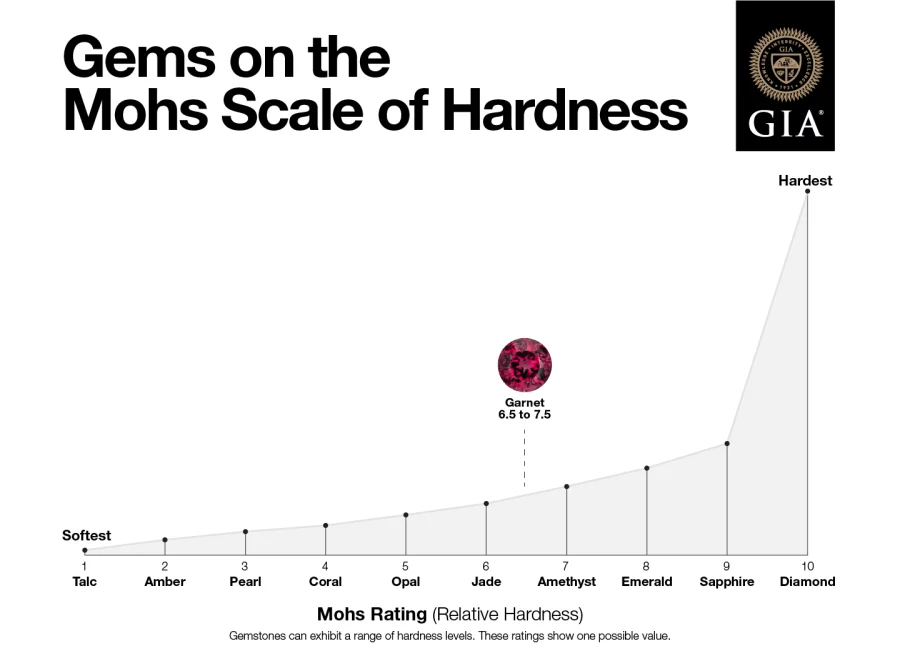
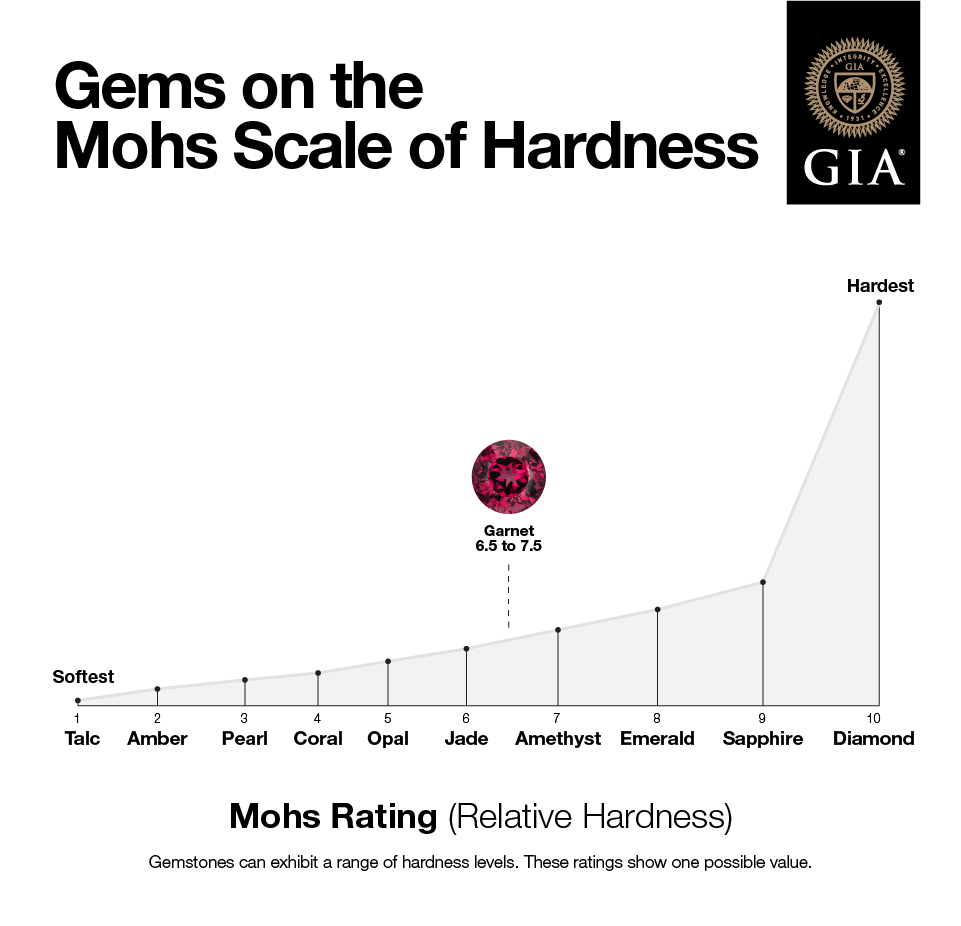
Garnet Origins
Garnets are found in metamorphic and some igneous deposits all over the world. Pyrope is found in South Africa, Sri Lanka, China and Madagascar, while almandine is found in India, Brazil and the U.S. Other locales include India, Kenya, Mozambique, Tanzania, Afghanistan, Australia, Myanmar (Burma) and the Czech Republic. Bohemia in the Czech Republic has a rich history of garnet mining. Though production has declined, it remains renowned for processing and crafting high-quality garnet jewelry.
Garnet Color, Cut, Clarity and Carat Weight
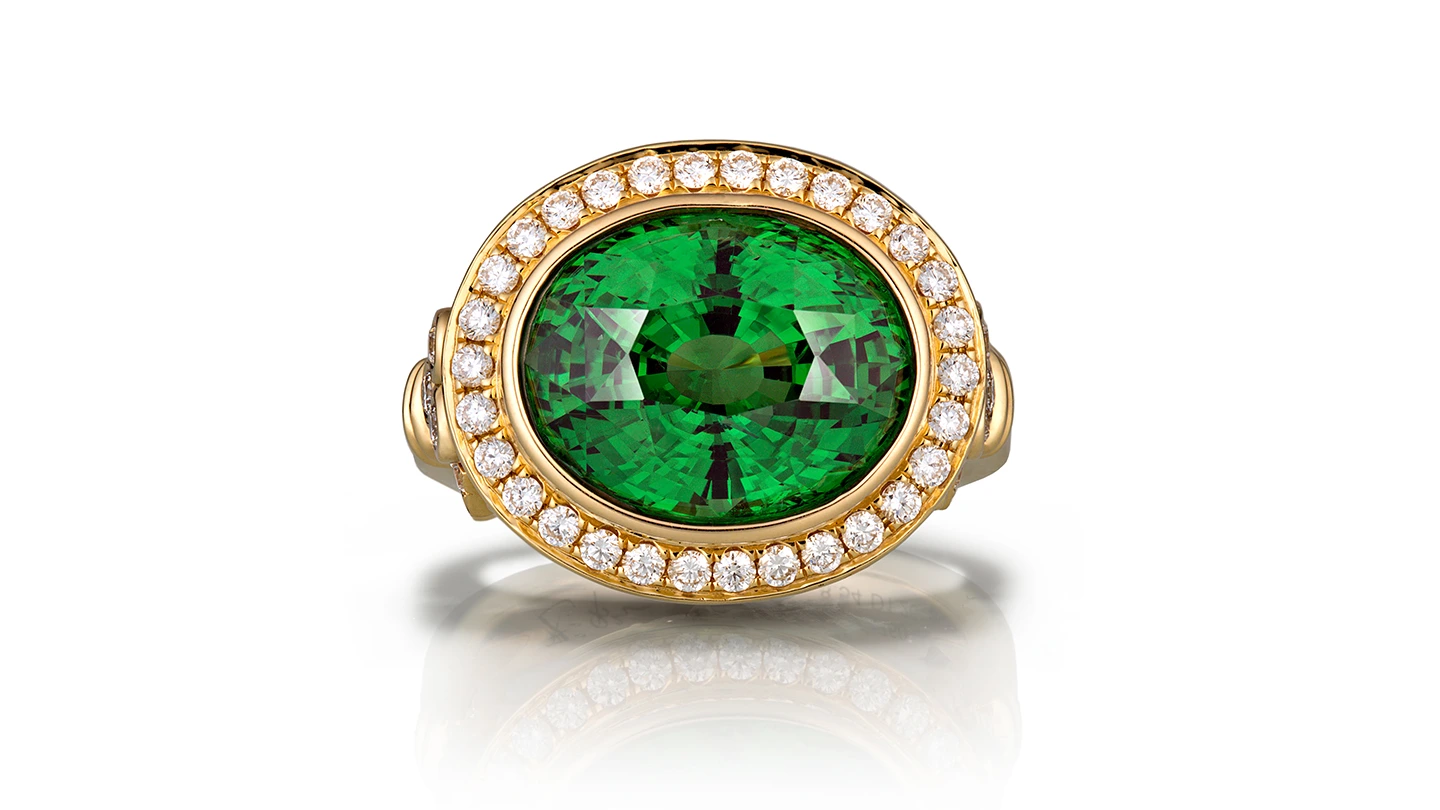
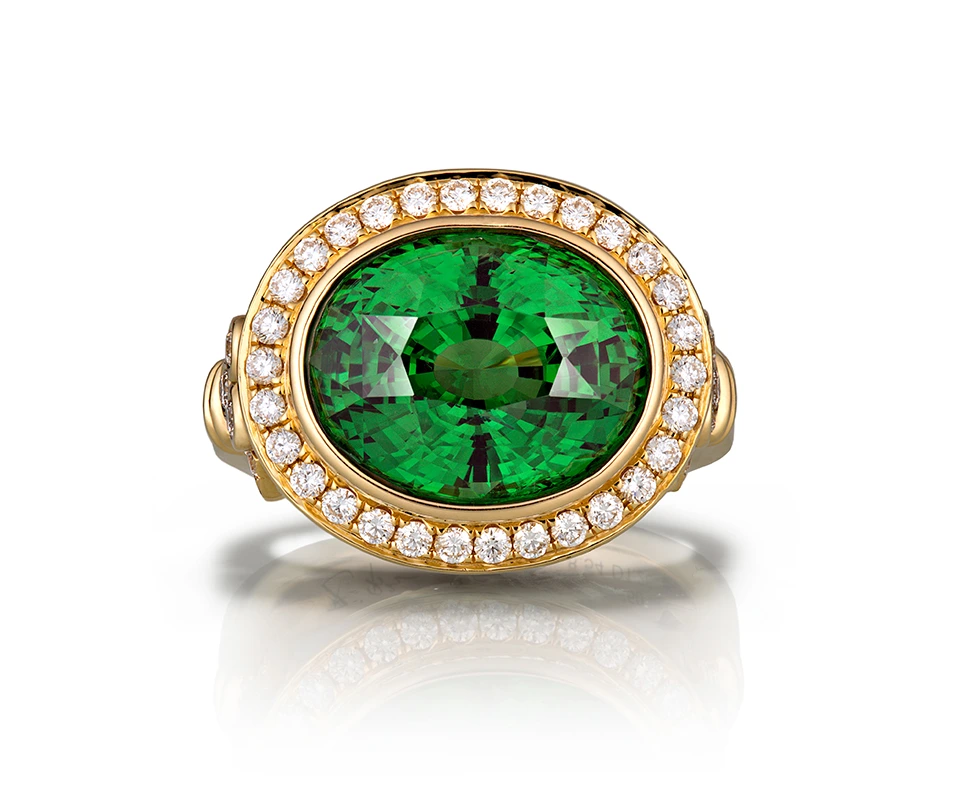
Unlike diamonds, garnets aren’t graded by a strict version of the “4Cs” (Color, Cut, Clarity and Carat Weight), but these factors still affect their beauty and value—especially color. Garnets are prized for their rich hues, from deep reds and vibrant oranges to rare greens and blues. Understanding how color, cut, clarity and carat weight influence a garnet’s quality can help you choose the perfect stone for you.
Garnet Color
Color is the most important value factor. The rarest and most valuable garnets include green varieties like tsavorite and demantoid, which are prized for their vivid hues which can rival or exceed that of fine emeralds. Blue garnets are also extremely rare and highly valued for their unique color. Vivid orange garnets, like mandarin garnet, also hold high value, particularly in larger sizes. Red garnets are the most common and affordable but remain beloved for their beauty and symbolism.
Garnet Cut Style
Garnets are cut into a wide variety of shapes and styles. Smaller red garnets are often cut into standard, calibrated sizes for use in mass-produced jewelry. In contrast, larger and more valuable garnets—especially those with rare colors—are often cut into custom or freeform shapes that highlight their color and maximize carat weight.
Garnet Clarity
Clarity expectations vary by garnet type. Red and orange garnets typically have higher clarity, and eye-visible inclusions can lower their value.
Tsavorite and demantoid, however, often contain natural inclusions. In fact, demantoid garnets with fine, golden “horsetail” inclusions can actually be more valuable, as these inclusions are considered a desirable identifying feature.
Garnet Carat Weight
Garnets can vary widely in size depending on the variety. Red garnets are found in very large sizes, sometimes weighing dozens of carats. Tsavorite and demantoid, on the other hand, are rarely found in sizes over 2 to 2.5 carats. Green garnets larger than this are extremely rare—and significantly more valuable.
To learn more about garnet quality and what makes this gemstone so unique, visit GIA’s guide to garnets.
History of Garnet Engagement Rings and Jewelry
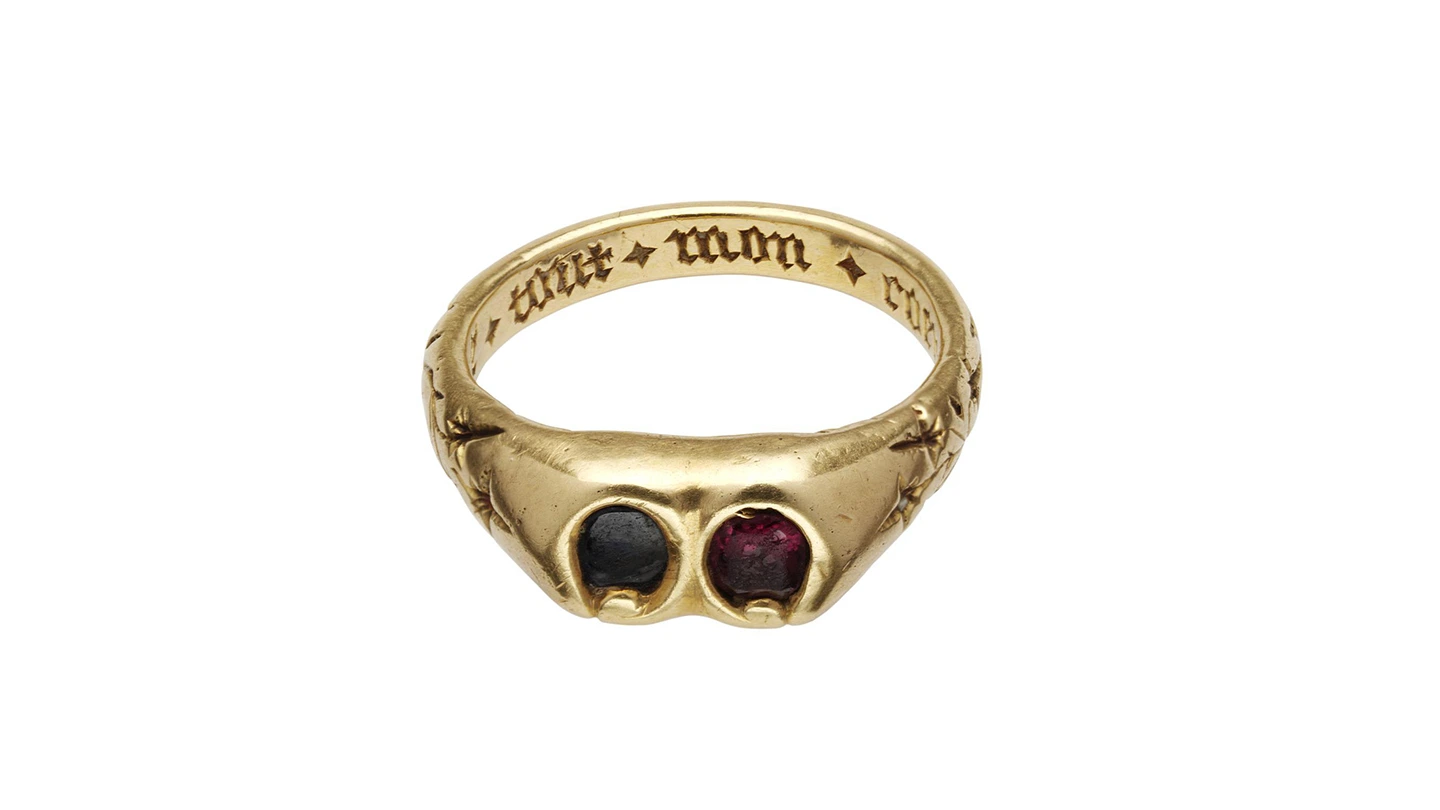
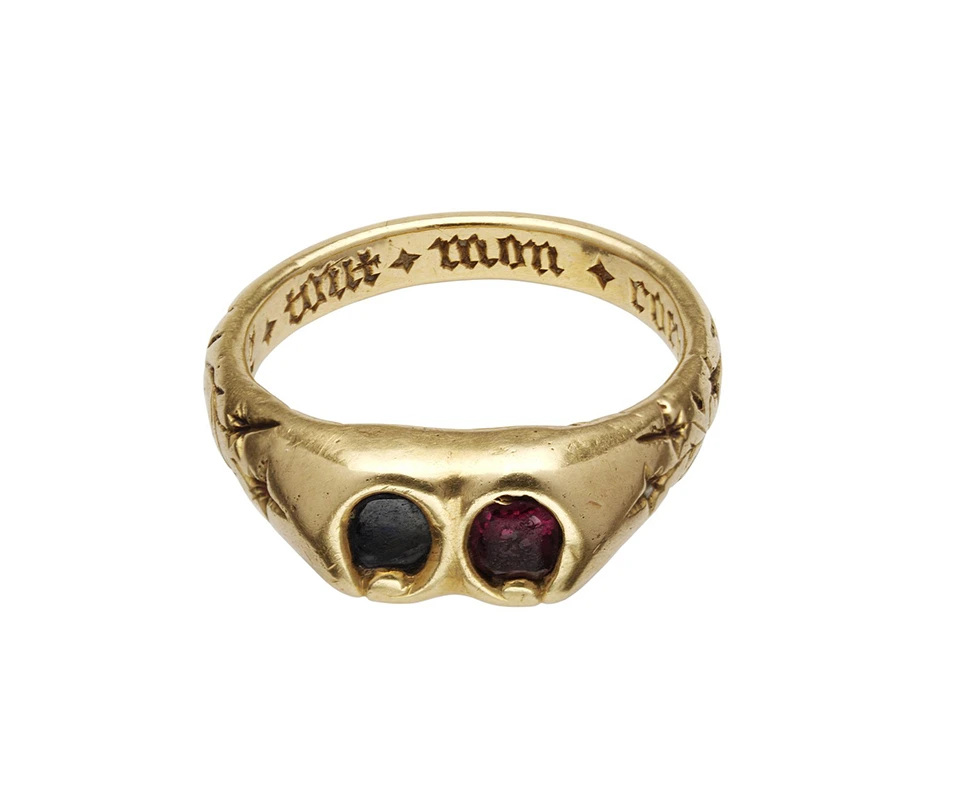
Beyond their beauty, garnets carry deep cultural and emotional significance. Garnets have been beloved for thousands of years and uncovered in numerous historic treasure troves—including the Staffordshire Hoard, which contains around 3,500 pieces of garnet cloisonné jewelry.
Learn what this precious gem has meant throughout the ages:
Ancient Egyptians and Romans: Egyptians believed garnets had protective power. They wore them as amulets and used them in carvings as early as 3100 BC. In ancient Rome, nobility used garnets in decorative inlay and jewelry, including in signet rings for sealing documents. Saxon kings inlaid military ornaments with garnets.
Medieval Times: During the Middle Ages, garnets were favored by clergy and nobility and used to adorn ornate jewelry featuring intricate gold filigree and religious motifs. They were also set in garnet engagement rings, and were worn to protect warriors in battle and guard people against the plague.
Victorian Times: During the Victorian era, small red garnets were often set in clusters in intricate designs. The pomegranate was a popular motif. Many of these red garnets came from Bohemia, later known as Czechoslovakia.
Art Deco Influence: During the Art Deco movement in the early 20th century, garnet engagement rings were popular, especially those with geometric designs that reflected the era’s modern aesthetic.
Modern Appeal: Today, more garnet types and colors are available than ever before. With the discovery of green, orange and purple garnets, garnet engagement rings can now be designed to offer greater versatility and individuality to suit contemporary tastes.
Garnet Engagement Ring Meaning and Symbolism
Garnet engagement rings carry rich and timeless symbolism, making them a meaningful choice for couples looking for more than just visual beauty.
Traditionally, garnets have been associated with love, passion and courage—ideal qualities for lifelong partnership. In ancient times, they were believed to inspire devotion and strengthen bonds between lovers, making them a powerful symbol of commitment. Their deep red hues often evoke the heart, reinforcing their romantic associations and making them a striking alternative to the classic diamond.
Beyond romance, garnets have long been seen as protective stones. They were worn as talismans for strength, courage and safety, particularly during travel or times of hardship.
Garnet is also January’s birthstone and the gem given on the second and sixth wedding anniversaries.
Choosing a garnet engagement ring can represent a grounded, lasting love—rooted in both emotional depth and resilience. Whether selected for its vibrant color or meaningful symbolism, a garnet engagement ring represents a unique and thoughtful expression of love that withstands the test of time.
Importance of Purchasing a Garnet with a GIA Report
Assurance of Quality and Authenticity: When choosing a garnet, make sure it comes with a GIA Colored Stone Identification Report. Often called a GIA certificate, this trusted document verifies your gem’s authenticity and quality, including key details like color, cut style, carat weight and transparency.
Enhanced Consumer Confidence: Garnets with a GIA report are easier to insure and often have higher resale value. Having this reliable, independent confirmation boosts your confidence and simplifies insurance and resale processes.
With a GIA report in hand, you can fully appreciate your garnet’s captivating beauty with complete peace of mind. Garnets, with their rich hues and shimmering depths, symbolize passion, protection and enduring love. Knowing your garnet has been carefully analyzed lets you cherish its vibrant color and brilliance confidently.
More than just a gem, a garnet with a GIA Colored Stone Identification Report is a lasting expression of beauty, meaning and trust.
